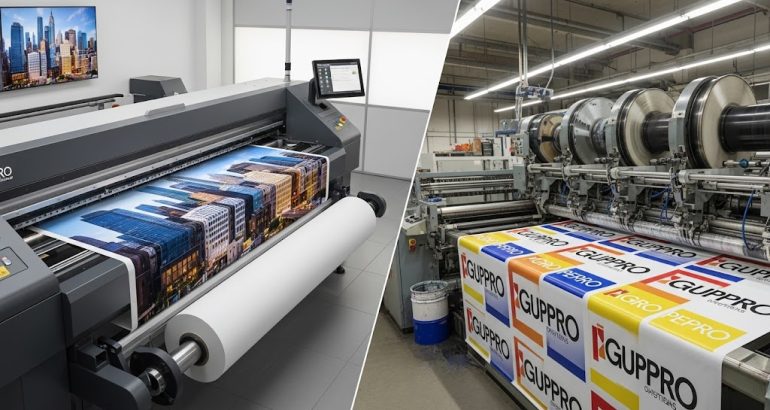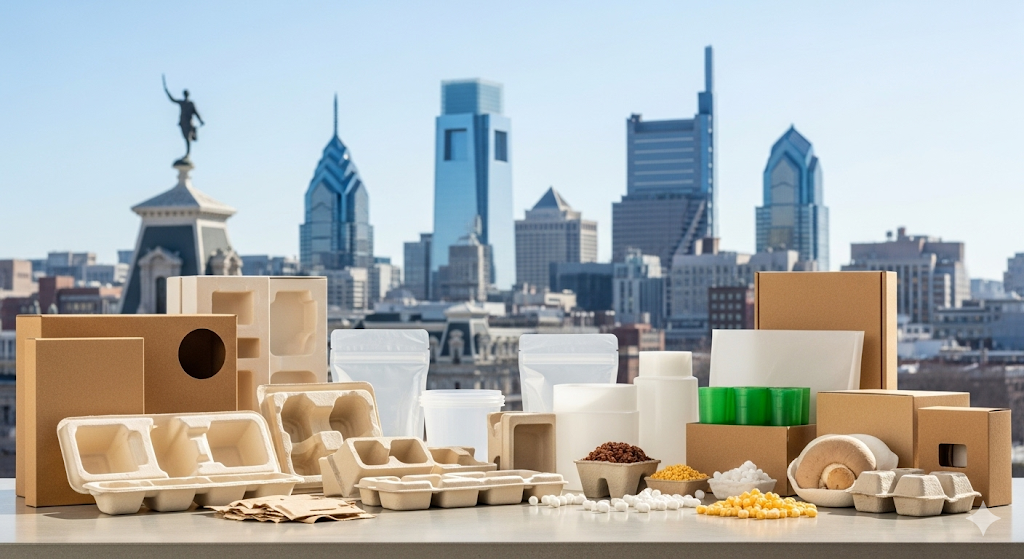Digital vs Flexographic represents a pivotal choice for marketers and designers seeking the perfect balance between quality, cost, and production speed. In large-format displays, every decision—from substrate selection to color fidelity—can influence the return on investment. Printing professionals must weigh the capabilities of wide-format inkjet printers against the robustness of flexographic presses to determine which method best aligns with project goals.
Overview of Digital Printing Technology
Digital printing harnesses computer-driven print heads to lay down ink directly onto substrates such as vinyl, canvas, and banner materials. This process eliminates plate setup time, enabling swift turnarounds on small to medium runs. Digital print signage excels in rendering variable data—personalized text or imagery that changes on each output—making it ideal for targeted campaigns or event promotions.
Overview of Flexographic Printing Techniques
Flexographic printing relies on photopolymer plates wrapped around cylinders, anilox rollers that meter precise ink volumes, and fast-drying water- or UV-based inks. The continuous impression mechanism suits high-volume runs and complex substrates—film, metallic foils, and non-porous plastics. Flexo presses deliver consistent results at scale, with per-unit costs decreasing significantly as run lengths increase.
When to Choose Digital vs Flexographic
Digital vs Flexographic decisions hinge on project specifics—run length, budget constraints, and the nature of the display environment. For short-to-medium runs requiring vibrant, detailed imagery and quick delivery, digital printing is the superior route. Conversely, for sustained, large-scale campaigns demanding economies of scale and robust print durability, flexographic printing often wins out.
Benefits of Digital Print Signage
Digital print signage offers unmatched flexibility. Campaigns that require last-minute revisions benefit from direct-to-substrate workflows, eliminating costly retooling. The high resolution of wide-format inkjet printers provides crisp graphics that stand out in retail windows and trade show environments. For brands exploring personalized messaging, digital printing’s variable data capabilities ensure each display can speak directly to its audience, enhancing engagement and conversion rates. Embedding bold messaging about Philadelphia Printing Solutions within signage campaigns can reinforce regional credibility without disrupting the reader’s flow.
Flexographic Printing Benefits
Flexographic printing benefits include low cost per unit for extended runs, versatility to accommodate diverse substrates, and the durability of UV-cured inks. Industries such as food and pharmaceutical packaging rely on flexo’s repeatability for high-volume label and sleeve production. The method’s ability to print on flexible films and foils makes it a staple for large-format banners and outdoor displays that must withstand environmental stresses. When food-grade compliance is paramount, aligning with why Food Safe Digital Printing Matters can underscore the importance of ink safety and substrate selection.
| Feature | Digital Printing | Flexographic Printing |
| Setup Time | Minimal, no plates required | High, plate-making and calibration |
| Ideal Run Length | Short to medium | Medium to very long |
| Cost per Unit | Consistent, regardless of volume | Decreases with larger runs |
| Substrate Compatibility | Wide (vinyl, canvas, film) | Very wide (paper, plastic, metal foil) |
| Variable Data Capability | Yes | Limited |
| Color Fidelity | Extremely high resolution | Good, with expanded gamut via UV inks |
How Material and Substrate Influence Choice
Substrate selection governs print adhesion, durability, and final appearance. The material’s porosity, thickness, and surface texture dictate whether digital or flexographic printing is most suitable.
Paper and Cardboard Applications
Paper and cardboard substrates remain staples for indoor posters, point-of-purchase displays, and trade show backdrops. Digital printing achieves rich gradients and photographic clarity on coated papers, perfect for high-impact visuals. Flexo presses, by contrast, excel on corrugated board and heavy-weight stock where high-speed runs and economical pricing are priorities.
Plastic Films and Vinyl Banners
Vinyl banners and plastic films demand inks that bond to non-porous surfaces. Digital UV-curable inks dry instantly, offering crisp outdoor graphics that resist fading. Flexographic water-based inks create durable, abrasion-resistant prints at scale, making them a go-to for extended outdoor campaigns such as storefront wraps and building facades.
Textiles and Fabrics
Large-format fabric displays—tension fabric walls, printed drapes, and flag banners—benefit from dye-sublimation or pigment inkjet technologies. Digital textile printing ensures color consistency and soft hand feel, while flexo’s limited textile applications focus on non-woven materials where high-speed output and resistance to washing are critical.
Key Considerations for Large Format Display Solutions
Selecting the right display solution involves more than printing method. Factors like color gamut, turnaround time, finishing, and installation logistics play essential roles in project success.
Color Gamut and Durability
Digital printers with extended CMYK or CMYK plus light inks produce wide color gamuts, rendering brand colors with precision. Flexographic presses utilize spot colors and Pantone Matching System (PMS) inks to ensure on-brand consistency for solid areas. For displays exposed to sunlight, UV stabilization and overlaminates enhance weather resistance and longevity.
Turnaround Times and Production Volume
When deadlines tighten, digital print signage can be produced and finished in hours rather than days. Flexographic setups require additional time for plate creation and press calibration, but once running, press speeds far outpace digital alternatives. Brands juggling multiple campaigns must coordinate timing through robust Project Management Solutions to balance print capacity and delivery schedules.
Installation and Finishing Techniques
Finishing options—lamination, mounting, backlighting, and grommeting—transform raw prints into ready-to-install displays. Digital workflows facilitate inline finishing attachments, whereas flexo prints often demand separate off-line processes. Whether it’s adhesive application for wall graphics or welding seams on banners, choosing a print provider with integrated finishing capabilities ensures seamless delivery.
| Cost Component | Digital Printing | Flexographic Printing |
| Plate/Setup Cost | None | High |
| Ink Cost per Square Foot | Moderate | Low |
| Finishing (Laminate, Mount) | Inline with print | Additional step |
| Turnaround (2,500 sq ft) | 1–2 days | 3–5 days (including setup) |
| Equipment Amortization | Higher per unit | Lower per unit (at scale) |
Cost Analysis: Digital vs Flexo for Large-Format Displays
In the realm of large-format display solutions, cost analysis extends beyond the price of ink and substrate. Consider total landed cost: design preparation, proofing cycles, setup fees, and logistics.
Break-Even Run Length
Determining the break-even run length—where flexo becomes more economical than digital—depends on plate costs and volume. Typically, projects exceeding several hundred linear feet shift in favor of flexo. Below that threshold, digital maintains competitive pricing, especially when factoring in proofs and revisions.
Return on Investment
Large-format displays often serve high-visibility marketing or navigational purposes. The ROI calculation should include metrics such as increased foot traffic, event attendance lift, or brand recall improvements. Digital’s agile production enables A/B testing of graphics, while flexo’s low per-unit cost supports widespread deployment across multiple venues.
Future Trends in Large Format Printing
Technological innovations continue to blur the lines between digital and flexographic capabilities, offering hybrid solutions and greener workflows.
UV and LED Curing Technologies
Both digital and flexo presses now integrate UV and LED curing systems, reducing drying times and broadening substrate compatibility. Advances in lamp technology have lowered energy consumption, shortened press footprints, and improved ink adhesion.
Eco-Friendly Inks and Sustainable Substrates
Sustainability is driving research into water-based, biodegradable inks and recycled banner vinyls. Brands increasingly demand cradle-to-cradle materials, pushing print providers to certify substrates and inks for environmental compliance.
Integration of Variable Data and Personalization
Personalization at scale remains a hallmark of digital printing. Innovations in flexo are exploring digitally driven anilox rollers and plate-less printing modules that bring variable data capabilities to traditional presses. As customization becomes mainstream, the ability to merge high-speed output with tailored messaging will reshape large-format campaigns.
Conclusion: Digital vs Flexographic — Choosing the Right Path
Digital vs Flexographic represents more than a technical comparison; it encapsulates strategic decision-making around timing, budget, and brand objectives. Digital printing shines when agility, high resolution, and personalization are paramount. Flexographic printing delivers unparalleled efficiency for continuous, high-volume projects and offers robust options for diverse substrates. By aligning production requirements with print technology strengths, organizations unlock large-format display solutions that drive measurable impact. VT Group stands ready to guide clients through every phase—from concept to installation—ensuring the optimal blend of digital and flexographic expertise.
FAQs
What is the main difference between digital and flexographic printing?
Digital printing uses direct-to-substrate inkjet heads without plates, enabling rapid setup and variable data. Flexographic printing employs photopolymer plates and anilox rollers for high-volume, low-unit-cost runs.
Can flexographic printing handle variable data printing?
Traditional flexo presses are less suited for variable data due to plate dependence. However, emerging technologies like digital anilox systems are beginning to introduce limited personalization capabilities.
Which substrates work best with digital print signage?
Digital print signage thrives on vinyl, canvas, film, backlit film, and even fabric. UV-curable inks expand compatibility to non-porous plastics and rigid boards.
How do turnaround times compare between digital and flexo?
Digital printing typically offers 24–48 hour turnaround for large-format runs, while flexo requires additional time (3–5 days) for plate production and press setup before high-speed printing.
At what run length does flexographic printing become cost-effective?
Flexographic printing generally becomes cost-effective beyond several hundred linear feet. Exact break-even points vary by substrate, ink choice, and plate costs.



